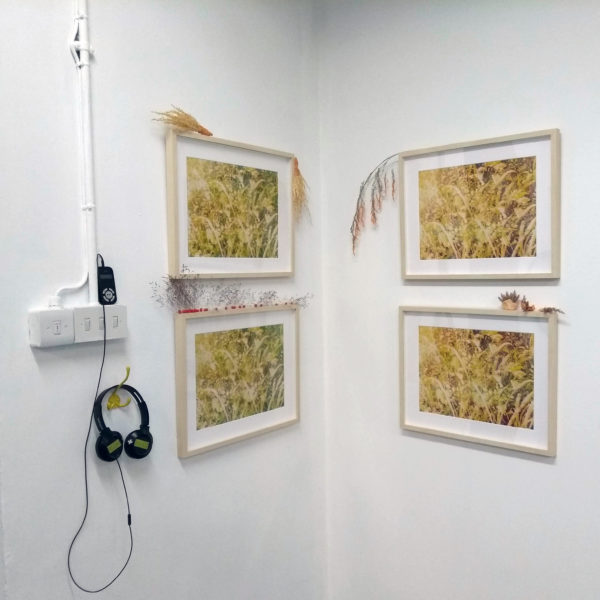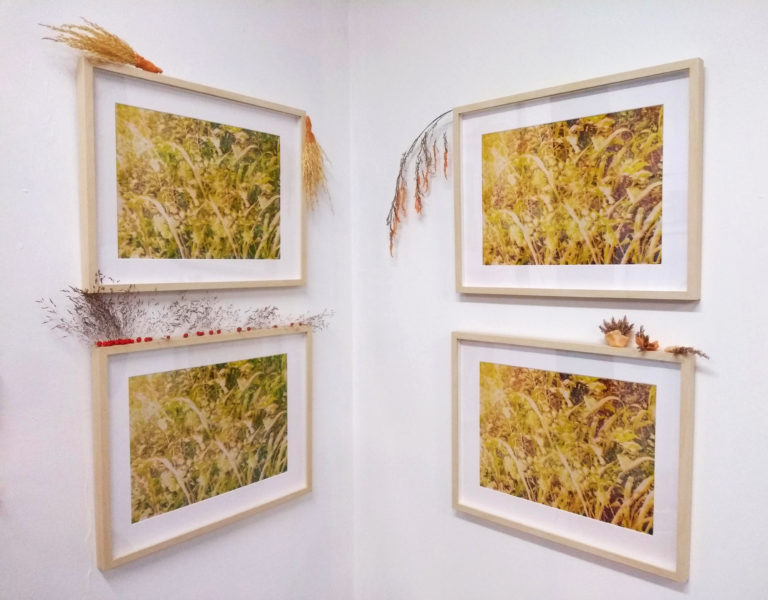Tiller Daughter #1 and #2
There are 418 million blades of grass per person alive in 2019.

A tiller is a stem produced by grass plants, after the first blade has grown. Tillers can bloom if exposed to necessary conditions, otherwise they remain vegetative. The original shoot is referred to as the ‘parent’ while the new tillers are termed ‘daughter’.
These works are part of the Romantic Geography series, works which explore humanity’s relationship with the Earth and the ways in which we perpetually see ourselves reflected in the landscape.

Romanticism in this case is characterised by an emphasis on emotion and individualism, as well as glorification of nature and the land. Geography is defined as the study of the physical earth, the atmosphere and the effects Humanity has on them. Romantic Geography began in Berlin in 2015 and continues to be reflected in the artist’s practice and works.
The Tiller Daughter works have grown from the artist’s diagnosis, and subsequent treatment, for a combination of anxiety disorders and how that has fundamentally affected her relationship with previously safe environments.
With Tiller Daughter #1 and #2 the viewer is invited to consider what is helpful for one person may not be for another, and that experiences for a mentally well person may be completely different for those experiencing cognitive dissonance and distress. Nature is often put forward as a one example of a ‘cure-all’, a simple treatment for those experiencing mental illness. Part of a wider culture of misunderstanding and dismissal, mental illnesses can be met with such unhelpful suggestions: supporting symptoms of doubt, shame and ultimately failure to seek treatment.
In these works we see how one’s inner landscape is the lens through which we experience our physical world. This is the first time the artist has been well enough to intimately explore an aspect of her diagnosis in her work.